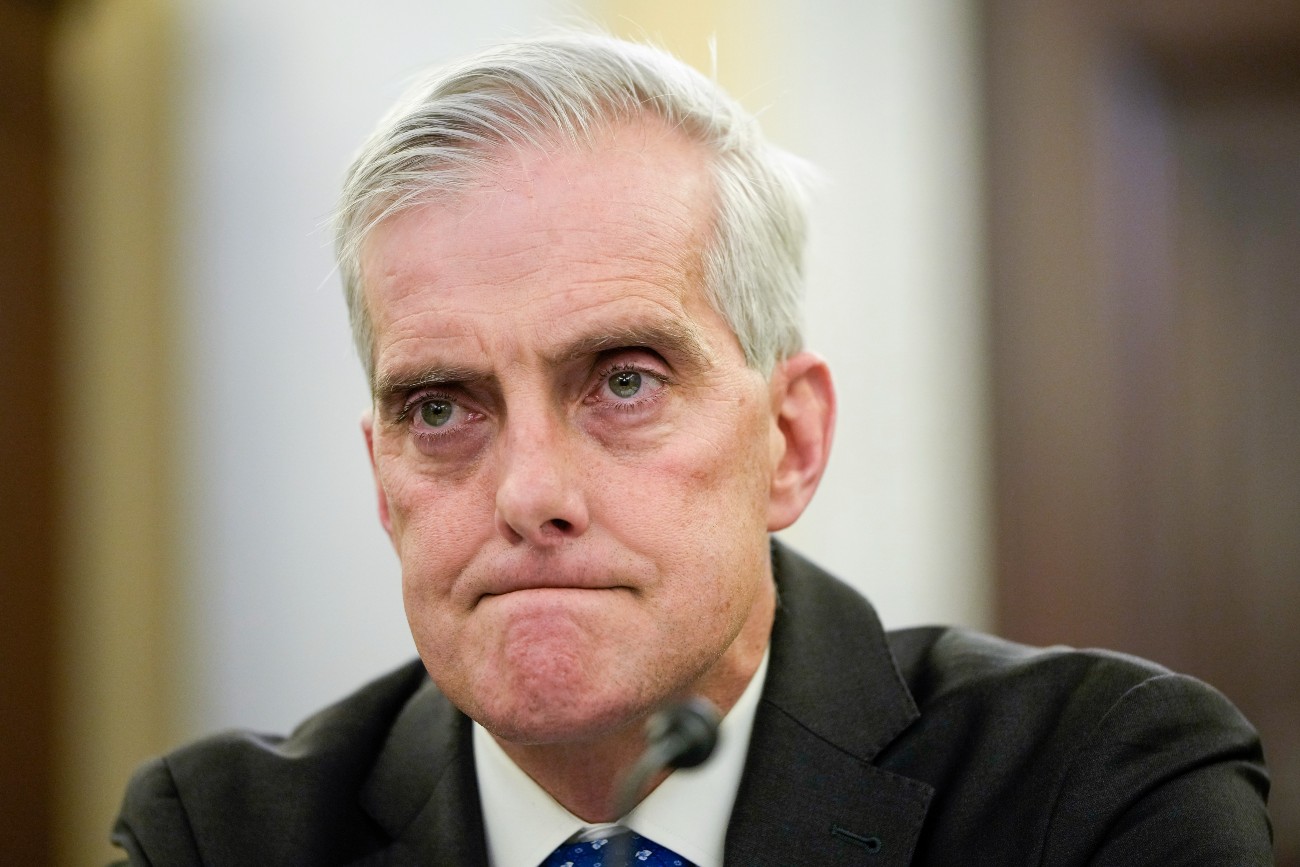'It's Life Shattering:' Employees and Lawmakers Denounce VA's Efforts to Shutter Facilities
The department is telling employees not to panic, but the message is not getting through.
When employees at the Chillicothe Veterans Affairs Medical Center in southern Ohio heard their employing agency wanted to close down their place of work, their reaction was uniform.
“We were devastated,” said Jessica Fee, an advanced medical support assistant at the facility. “I had to talk to my staff and it took everything I had not to break down squalling. I stayed at work that night until 2:30 in the morning talking to my staff on every shift. It’s life shattering.”
The Ohio facility was one of more than 30 that VA recently proposed for closure and one of about a dozen that would not have a direct replacement. The recommendations were only the start of a long process—and the fate of the facility is far from sealed—but concern and resistance from stakeholders has been swift.
“The impact is really on the veterans,” said Jon Rose, director of outpatient psychology for VA in Palo Alto, where the Livermore VA Medical Center is slated for closure. While VA has told employees there are other facilities in the area could absorb their jobs, Rose said the private sector and other VA locations do not have the same offerings that VA is hoping to shutter. Like many critics, Rose criticized VA for analyzing largely pre-pandemic data in its research and making decisions influenced by which campuses had large resale values.
The 2018 Mission Act required the department to make recommendations on the future of its physical footprint to a new panel, the Asset and Infrastructure Review (AIR) Commission, which VA did earlier this month. In addition to the hospitals, VA recommended shuttering 172, or about 21%, of its more than 800 outpatient clinics. It would partly offset those closures by building new hospitals, increasing its medical speciality clinics by 56% and boosting reliance on private sector providers.
The commission will have a year to review VA’s plan, conduct its own hearings and investigations, make its own proposals and send them to the White House. Biden can then reject the plan or sign off on it and send it to Congress. Similar to previous Base Realignment and Closure efforts at the Defense Department, Congress will have to accept all of the recommendations or none of them. Lawmakers must proactively vote down the proposals to void them, however, as inaction would allow them to take effect.
VA said its overall footprint, including medical centers, outpatient clinics, nursing homes, rehabilitation facilities, health care centers and “partnership” facilities, would increase by about 6% under its proposals. Hundreds of thousands of veterans would gain closer access to critical care. Still, impacted workers, lawmakers and some advocacy groups have pushed back on the recommendations, potentially signaling an uphill climb for VA to see their overhaul through.
Cold Comfort
All told, VA would displace or relocate more than 50,000 jobs under its proposals, according to an estimate by the American Federation of Government Employees, which represents most VA workers. VA has countered that after it builds new facilities and adds other services, it would come out with a net of more staff. For the impacted workers worried about their places of work closing and their patients potentially losing access to some services, that came as little comfort.
“They’re making it more difficult for the most needy patients to get to where they need to go for the care they are accustomed to,” said Rhonda Risner, a nurse at the VA in Dayton, Ohio, speaking as a representative for National Nurses United.
Risner’s facility is more than 70 miles from the Chillicothe medical center VA has recommended for closure, though VA proposed relocating inpatient mental health, half of its nursing home and long-term rehabilitation services to her place of work. Tinita Cole, who also works in Dayton in the patient advocacy office, said veterans would opt to go into the private sector for care rather than commuting that far.
“I know how severe those veterans can be,” said Cole, who formerly worked on the psychiatric ward and frequently dealt with patients recovering from drug and alcohol abuse. “They’re very unique in how they need to be treated. They’re fragile.” She added it would cause severe challenges to ask them to travel an hour and a half for care.
In addition to harming veterans, Risner said VA’s approach is going to effect lasting damage to its workforce.
“How does that demoralize people in a facility knowing that you’re on the chopping block?” she said. “Is that going to attract the best and brightest people?”

Credit: Drew Angerer/Getty Images
For its part, VA has told employees not to worry, as any potential changes are not yet finalized and even if approved would not take place for many years into the future.
“There is a long road from here to enactment of the AIR Commission recommendations,” VA Secretary Denis McDonough said last week, stressing that VA went to great lengths to detail its proposals to the workforce ahead of its rollout and to ensure that they would gain access to newer, state-of-the-art facilities as a result of the changes. “The AIR Commission recommendations are as much an investment in our workforce as they are an investment in our ability to care for our vets, because we need updated facilities to do both of those things.”
Asked whether VA had a plan to avoid the sort of demoralization, recruiting challenges and employee exodus that Risner warned of, the secretary did not make any firm commitments.
“We are constantly assessing what we need to maintain the world’s best health care workforce, which is what we have,” McDonough said. “But let’s also remember that changes envisioned in our recommendations are decades away.”
Cole said her colleagues were outraged when they saw the recommendations, doubting they could absorb their proposed new responsibilities or that their colleagues from Chillicothe would make the move. In conversations with management, she added, the top brass stressed only that the changes were a long way off.
“They’re going to lose jobs,” she said.
The recommendations are far from inevitable, with key members of Congress already denouncing them. Senate Majority Leader Chuck Schumer, D-N.Y., attended a recent rally in Brooklyn to oppose VA’s proposal to close a medical center there, saying he would lead an advocacy campaign in support of the hospital. He declared the closure, and two others in his state, would not occur on his watch, adding the battle plan to resist VA had been drawn.
Sen. Jon Tester, D-Mt., who chairs the Senate Veterans Affairs Committee, appeared to call the recommendations dead on arrival.
“Any effort to kneecap our veterans’ health care is a non-starter for me,” Tester said, promising to use his position to “fight tooth and nail against any proposals that blindly look to reduce access to VA care or put our veterans at a disadvantage.”
Lawmakers with impacted facilities in their states, such as Sens. Sherrod Brown, D-Ohio, and Rob Portman, R-Ohio, have led bipartisan efforts calling on VA to alter their proposals. AFGE held a rally this week in front of VA’s Washington headquarters to call for the recommendations to be rejected.
Striking a Balance
Not all VA workforce reaction was entirely negative. One licensed vocational nurse in San Francisco said the industry was moving to more telehealth and it may make sense for the department to reduce its physical footprint in some areas. A nurse in Colorado said VA has long struggled with inefficiencies related to acute care and the need to quickly adapt, so the department may be pushing more of those services to the private sector and focusing its internal resources on specialty outpatient and long-term care. Since the passage of the Mission Act, which made it easier for veterans to receive private sector care on the government’s dime, more and more patients are going the “community care” route, the nurse said.
“The moves are years behind,” she said, though she suspected her colleagues in more rural locations were “probably in a panic.”
Sheila Elliott, a clinical pharmaceutical specialist in Hampton, Va., and president of her local AFGE council, conceded it made some sense to shut down the facility where she works, as VA has recommended.
“Our building is old and I know it cannot accommodate the new technologies,” Elliott said. “I get that.” She added, however, that the proposal to build two separate facilities in the southeast Virginia area that offer different services and would force veterans and employees to face difficult commutes was ill-conceived.
“Don’t shortchange the veterans,” Elliott said.
NEXT STORY: Making the Case for a Federal Management Corps






